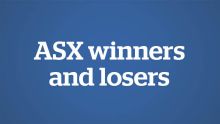Here's a simple graph that tells an amazing story – the owners of Sydney's housing don't want to sell.
More BusinessDay Videos
Sydney house prices not falling
Another housing story, but an important one as it cuts through the noise from those screaming disaster or never-ending boom. Michael Pascoe comments.
Sydney, a city of five million people when including the Central Coast and Blue Mountains, has fewer homes for sale than Brisbane, a city less than half its size. Sydney is two-and-a-half times the size of Perth, but the two cities' listings aren't much different.
The graph, by analyst Peter Wargent using SQM Research figures, effectively blows away much of the wishful thinking by wannabe Sydney buyers that prices are about to be significantly lower.


There was an attempt to suggest the 5.9 per cent increase in Sydney's May listings over April might herald a change as asking prices eased about 1 per cent last month, but that belies the scale of the housing shortage.
With Sydney's population growing by about 90,000 a year, supply continues to fail to keep up with demand. SQM managing director Louis Christopher thinks Sydney housing prices will finish 2017 somewhere between 11 and 16 per cent higher.
Melbourne has more listings but also faster population growth. Christopher reckons that will mean prices go up by 10 to 15 per cent this year.

Those big numbers make a mockery of the rats-and-mice policies Scott Morrison introduced in the May budget in an attempt to be seen to be doing something about housing affordability. While individually the initiatives ranged from good (improved financing for social housing) to absolutely marginal (the relative handful of people who will gain from the superannuation break for over-65s downsizing), they add up to nothing much with little impact on the supply and demand fundamentals.
Morrison's efforts to talk up his "housing affordability budget" initiatives have been expertly dissected and skewered by economist Saul Eslake. Unlike, say, limiting negative gearing to new properties, there's not much immediate incentive for a speedy increase of supply.
If we aren't building enough to boost the number of new properties for sale, what could encourage Sydneysiders to sell their existing properties?
Necessity – but that's only likely to come in two flavours: sharply higher unemployment; or sharply higher interest rates.
They tend to be mutually exclusive possibilities, given the goals of monetary policy. As for a surge in unemployment, it's very hard to see any suggestion of that on the Sydney horizon. The infrastructure boom still taking off effectively underwrites the city for the next four years and has the potential to blossom into a virtuous cycle.
Barring international calamity causing global financial markets to seize up, we would only get markedly higher interest rates if the economy was growing markedly faster and unemployment markedly lower. Mark that down when it happens, but no one would advise holding your breath.
As for the state government's efforts to toss a few grand the way of first home buyers – it increases their buying power, increases demand when supply remains the key issue. Vendors will be pleased.
SQM's Christopher warns that prices are pushed around by relative movements – listings being up or down a bit can be felt – but the scale of the shortage of listings means the fundamentals of the market aren't about to change enough to matter.
Yes, Sydney housing is very expensive, but people who want to live here are prepared to pay it.














0 comments
New User? Sign up